Weather plays a key role in conventional aviation, but what changes will be required for vertiport operation? Tom Batchelor reports
The UK celebrated 100 years of air accident investigation regulations in spring 2023. Marking the occasion, Crispin Orr, chief inspector of air accidents, noted: “Almost everywhere one looks across the aviation ecosystem there are physical systems and standard practices that have been introduced to improve safety.”
Orr’s comments reflect an industry that has, over the past century, made safety the highest priority. Now, as urban and advanced air mobility (UAM/AAM) systems and the necessary vertiports enter the mainstream, both developers and regulators must apply those same strict standards, tailoring them to a very different type of commercial air service. That includes keeping an eye on the weather.
The cost of weather technology depends upon the climate and any regulations there are for your area
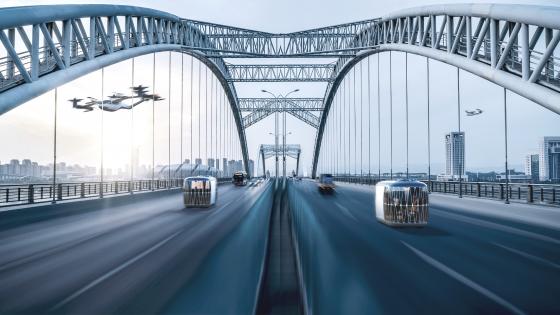
eVTOL developer Supernal’s recent investment in TruWeather Solutions will give it access to the latter’s forecasting technology and data analytics
The weather factor
Whether flying large aircraft or operating out of a vertiport, pilots need comprehensive, accurate weather information, securing access to certain types of data and technology to ensure flight safety. Aircraft departing or approaching a vertiport have an average cruising altitude of 2,000ft, far lower than the altitude of aircraft that fly in and out of airports, and there are numerous products that can help.
US meteorological technology company Baron Weather’s vice president of enterprise, Marc Krasner, told Airports International: “Safety is the biggest factor. Weather affects every person on Earth. A fast-forming storm could catch pilots off guard and cause injuries, and harm assets as well as structural damage. The cost of weather technology depends upon the climate and any regulations there are for your area. For example, the United States encounters a lot of severe weather. Depending upon the state, a vertiport may need tools to gauge fog, ice, lightning and intense storms. Another vertiport may be situated next to thousands of acres of forest. In that case, tools to gauge high wind speeds, as well as to monitor smoke from wildfires so one can avoid certain areas due to reduced visibility and other smoke-related hazards, would be very beneficial.”
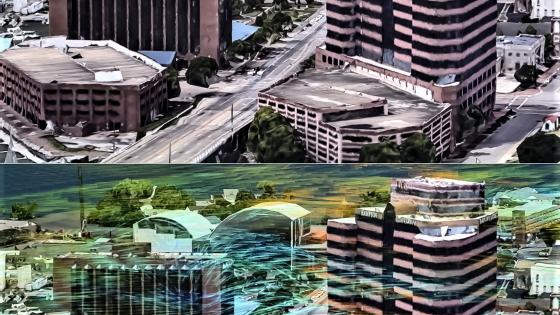
TruWeather’s NASA Phase II SBIR Urban Weather Sensing Infrastructure Testbed in Hampton, Virginia
The built environment
Accurate and timely weather reporting and forecasting is critically important for the operating environments of future vertiports. The microclimate at these sites is often influenced by the local built environment, varying from one block to the next, and nearby structures can alter the direction and speed of wind as well as the frequency of gusts and other weather conditions. Hyper-local wind flows and turbulence found in urban areas where this new form of aviation infrastructure is planned mean traditional aerodrome weather reporting will not be sufficient for the future crop of electric and conventionally powered VTOL aircraft.
For the time being, the AAM ecosystem will rely on many of the tools used by existing rotorcraft, including air traffic control services and automated weather observing system (AWOS) data that can measure and automatically broadcast current weather conditions. But as the number of VTOL aircraft expands, the requirements of local vertiport weather monitoring stations will need to change.
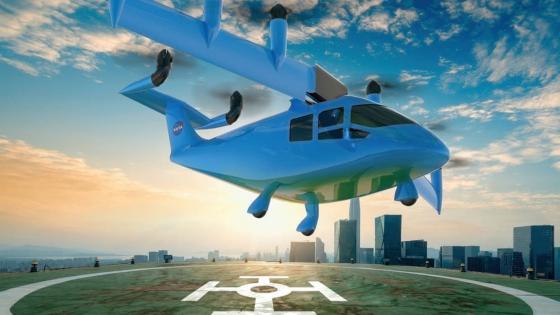
NASA’s AAM mission is working on different elements to help make AAM a reality. Vertiports is a focus area
One such company providing FAA-Type Certified AWOS for the future weather needs of vertiports is Mesotech, which offers customisable and adaptable technology that can be remotely monitored to keep systems running in all kinds of weather. “As new infrastructure pushes forward, the demands for accurate weather data will only increase,” the company has said. “Communities living in remote and harsh climates will need accurate weather data so that safe flight paths can be prepared in advance and adjusted at the drop of a hat as rain, wind, snow, ice or fog change course or increase in severity.”
Early involvement of weather issues is key to achieving a well-designed vertiport that is acceptable to the authorities and has high usability
Meteorological characteristics
Unisphere, a German company developing software for the operation of drones and air taxis, has analysed more than 1,000 vertiport locations for their meteorological characteristics. Speaking to Airports International, chief commercial officer and co-founder Dr Christoph Selig said: “It is really important to consider different altitude levels, not only because of the icing issue, but also because of stronger winds and other weather parameters that change with altitude. It is also very important to focus on the analysis of the planned operating hours, because in some regions there is a significant difference between day and night, which has a strong impact on the overall vertiport and business case planning. In one project, we also did a deep dive into the difference in service availability considering the increasing maturity of eVTOL (starting with VFR operations, transitioning to IFR [instrument flight rules] or having a de-icing vs no de-icing system). This was quite interesting because in some areas the service availability increased up to 40%, which is relevant information for planning the business case.
“We saw that the design of the approach and departure path is also an important issue that is strongly influenced by the weather. At one of the sites we evaluated, the prevailing wind direction changed every 3-4 months, which resulted in the need to plan multiple approach/departure paths, which also had to fit into the existing airspace structure. Therefore, early involvement of weather issues in the planning of a vertiport is key to achieving a well-designed vertiport that is acceptable to the authorities and has high usability.”
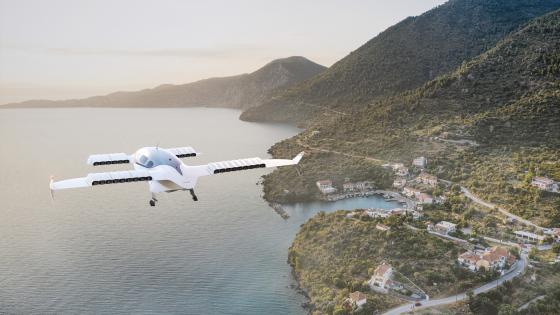
Lilium’s terminal buildings will be simple but adaptable, and designed to link the vertiport to its surroundings
Urban complications
Monitoring these factors is critical since loss of control in an urban setting could be catastrophic. With real-time information, pilots – or the operating systems of uncrewed aircraft – will be better able to manage difficult conditions as they arise. But it is not just wind that vertiport operators must consider. In urban locations, cooling towers and other rooftop-located power generators or vents can emit gases that risk creating additional sources of turbulence. Trees and terrain can also generate unstable air, and the threat posed by downwash or outwash interacting with the surrounding ground or infrastructure cannot be ignored.
EVTOL developer Supernal recently invested in TruWeather Solutions (TWS) in order to benefit from its forecasting technology and data analytics. As part of the investment, Supernal will pilot TruWeather's V360° software in its eVTOL to collect real-time weather data. V360° will provide Supernal with a detailed assessment of low-altitude weather conditions along flight paths, and Supernal plans to make the infrastructure available to the broader AAM community. Adam Slepian, chief commercial officer at Supernal, said: "The concept is simple – better weather measurements mean better forecasts for AAM operations. TruWeather's solution is advanced and can turn potential flight delays or cancellations into safe and timely passenger journeys for Supernal customers and the entire industry."
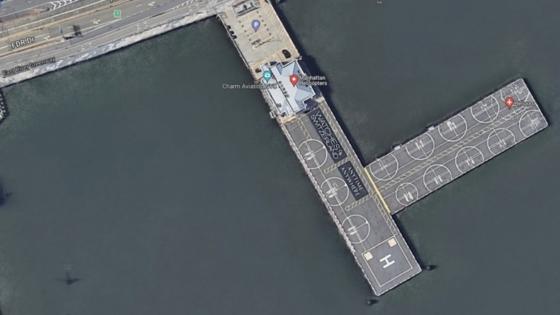
Vertiport developers will take their cue from the likes of Lower Manhattan Heliport when planning for weather implications
Software developments
TWS’s V360° Truflite software is a web application that can deliver wind and weather updates every 15 minutes with tens of metres of grid resolution at and around vertiports. The model has 1km or better resolution along flight corridors and takes into account the effects that buildings have on wind flow, which is critical when flying in urban environments. This is a marked improvement on the best data available in commercial aviation today, with 2.5km resolution and a lack of data on urban building disrupted wind flows.
TWS CEO Don Berchoff told Airports International: “The impact of weather, and most specifically winds, on vertiport operations will depend on the proximity of buildings and other structures near or on the vertiport. In vertiports located in relatively tight spaces, if the desire is to maintain a high throughput of aircraft and relatively close aircraft spacing, the vertiport will require advanced weather infrastructure to measure winds in 3D around and on the vertiport.”
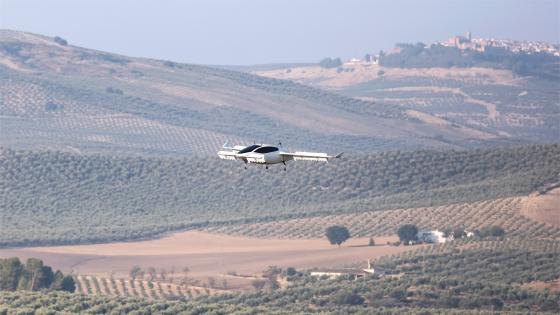
A Lilium flight test in Spain: terrain will be crucial when it comes to choosing where to develop vertiports
Berchoff explained that a windsock or automated surface-based weather station was insufficient, although if a vertiport were well designed, with relatively unobstructed wind flow, the requirement for 3D wind measurements at the vertiport location would be reduced: “However, having a wind profile of the atmosphere is desirable to measure low-level wind shear, and to better measure wind speed above the ground for power planning and eVTOL transition from vertical ascent/descent to cruise mode. Wind measurements are not only required for safety, but in allowing precise estimates of power consumption that will dictate weight allowance, recharge recovery times etc., which require better short-range wind predictions to ensure managing these issues occurs several hours before flights.”
Wind simulation
Having studied the urban vertiport weather challenge for a number of years, TWS and its partner DM-AirTech have developed a systematic approach to inform vertiport developers and designers. It begins with understanding the historical weather patterns and how they translate into urban wind patterns at locations that developers are considering for vertiports. Understanding the wind patterns at the metre scale informs how many hours a year the vertiport location could operate high-density operations. The wind pattern study for a location also informs the configuration of the vertiport to maximise throughput, based on prevailing wind patterns.
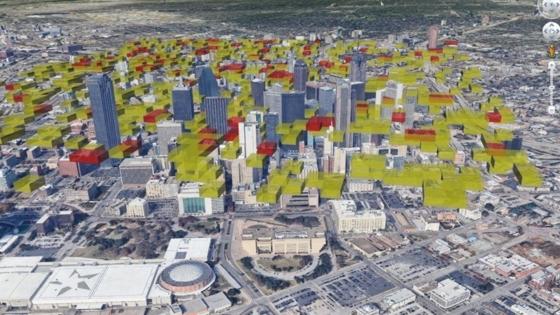
Modelling of wind impacts on UAM flights within a cityscape
Once the vertiport locations have been chosen, TWS runs a simulation of winds to determine the best location to place measurement devices. The goal in this case is to capture the most accurate picture possible of wind conditions, to better manage traffic flow, aircraft spacing. and client comfort. Berchoff explained: “Initially, planners and designers were suggesting outfitting vertiports with weather measurement devices common to heliports. Windsocks were listed as standard equipment. Now the industry is beginning to realise smaller, lighter electric vehicles landing in a pattern, with multiple vehicles touching down and taking off each hour, will require precise understanding and much better predictability of wind and wind shear to safely scale into a money-making operation.”
Last year, the company was awarded a NASA-funded small business innovation research contract to develop an urban weather testbed, in order to demonstrate delivery of more granular weather data and forecast services for low altitude urban and suburban flight. Kyoto-based venture MetroWeather became a partner to provide two doppler lidars for ‘MRI-like’ wind and potential cloud height information covering over 30-40 miles and up to 6,000ft above the ground. The testbed integrates observations from these lidars, 30 ground sensors and satellite data. The project aims to enable improvement of power management, payload weight estimates, travel times and flight separation services to improve airspace traffic management and vertiport throughput, ultimately allowing more aircraft to arrive and depart safely.
Traditional approaches that rely on modifying existing designs will be challenging due to lack of data. AAM is too new
Scarcity of data
Some industry leaders warn that currently there simply is not the data available to support this new push to providing vertiports with the meteorological services they will soon require. Speaking to Airports International, Mark Klopfenstein, president of AvMet Applications, an aviation consulting firm that provides weather impact mitigation products, said that one of the biggest challenges was that much of the ‘hyper-local’ weather data that is envisioned to be needed to support AAM operations just doesn’t exist: “There are efforts underway to develop wind models for flying in and around urban areas, to instrument these areas with weather sensors and to use data from the vehicles themselves to ‘crowd-source’ a more complete measurement of current conditions. However, many of the AAM business models will require accurate very high-resolution weather forecasts looking several hours out, and these just don’t exist yet.”
AvMet Applications has developed a new weather-aware system simulation model called USM that focuses on the smaller geography and unique characteristics of envisioned AAM operational environments and can support AAM planning efforts. According to the company, USM is a combination of new technology and adapted parts of an existing AvMet simulation engine that models the entire US National Airspace System. It can simulate the complex interactions of hundreds of AAM flights as they operate within a fully configurable airspace system of corridors and vertiports, including realistic dynamic weather conditions and interactions with traditional commercial aviation near airports, to support a full range of ‘what-if’ alternative analyses. One such prediction is the analysis of candidate vertiport locations, capacity and operations.
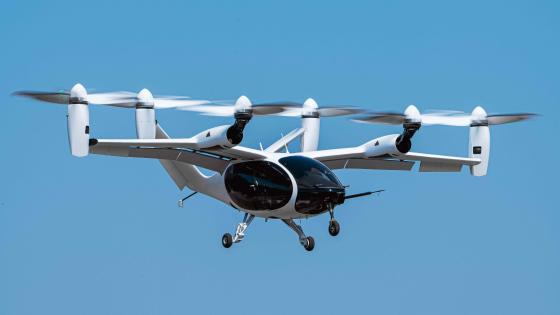
Weather trials
Meteorological solutions provider Vaisala has participated in pilot weather schemes across North America, Europe and Asia, working with public research institutions, universities and agencies, including the EU’s EUROCONTROL and EASA, the US Federal Aviation Administration (FAA) and NASA, as well as with private developers and operators building their own fully integrated service. Fernando Trolia Slamic, director of strategy and business development for Vaisala’s weather and environment business, said the nascent advanced air mobility sector’s ultralocal weather problem “can potentially make or break the economic viability of this new industry.”
Currently, most trials occur in laboratory conditions, far from the difficulties that built infrastructure presents in the real world. Slamic said: “The general public tends to assume that operating drones and eVTOLs is not too different from operating helicopters in a city space today. However, the difference is that helicopters have more power to pull through rough weather conditions. More importantly, with the vision of autonomous operation, we would be losing the best weather sensor we have for these aircraft: the human pilot.”
For Slamic, the financial incentive for installing weather monitoring equipment at vertiports is clear: “The good news is that sensing technology and modelling techniques are already capable of monitoring and predicting microweather very accurately and in a timely fashion. These are different from the parameters that a typical airport monitors and manages, and are not the kind of insights that national or regional meteorological offices can provide with simple data integrations to traffic management and other operational tools. By our estimates, equipping an urban vertiport with these sensing capabilities would only add a single-digit percentage to the total investment of building a vertiport, while dramatically improving its lifetime financials.”
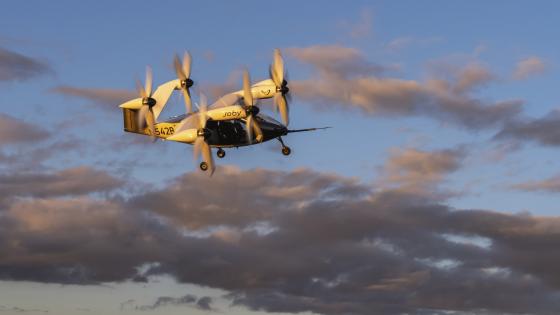
It will take time to gather sufficient weather data specific to AAM and vertiports, industry experts say
Further reading: Location, location, location
According to eVTOL developer Lilium, small ground-based vertiports can be built for as little as €1m, but larger, elevated structures can cost up to €15m, depending on their situation and size. The US Federal Aviation Administration (FAA) has outlined a number of areas that vertiport developers should consider when designing landing sites. To be adequately prepared for inclement weather, the regulator suggests that automated weather observing systems (AWOS) be installed at least 30.5m and not more than 213m from the VTOL touchdown and lift-off area, to avoid the instruments being affected by rotor or propeller wash.
According to the FAA, a turbulence-mitigating design measure, such as an air gap between the roof, roof parapet or supporting structure, may be necessary. Where that is not possible, vertiports on elevated structures may be subject to operational limitations under certain wind conditions. Additional consideration must be given to VTOL operations during the winter, where snow may affect visibility. The FAA suggests the installation of a vertiport heating system, as well as designing the site to accommodate snow removal equipment.
The UK Civil Aviation Authority has also produced guidance on the operational and technological considerations for vertiport developers. It highlights the importance of flight characteristics and urges VTOL manufacturers and operators to make aerodromes aware of their aircraft performance capabilities and limitations, not least battery life and holding time.
Asked how best to prepare for future VTOL landing locations, Mark Klopfenstein, president of AvMet Applications, recommended clean-sheet designs to facilitate the transition from traditional aerodromes to a facility that can sustain a busy VTOL environment.
